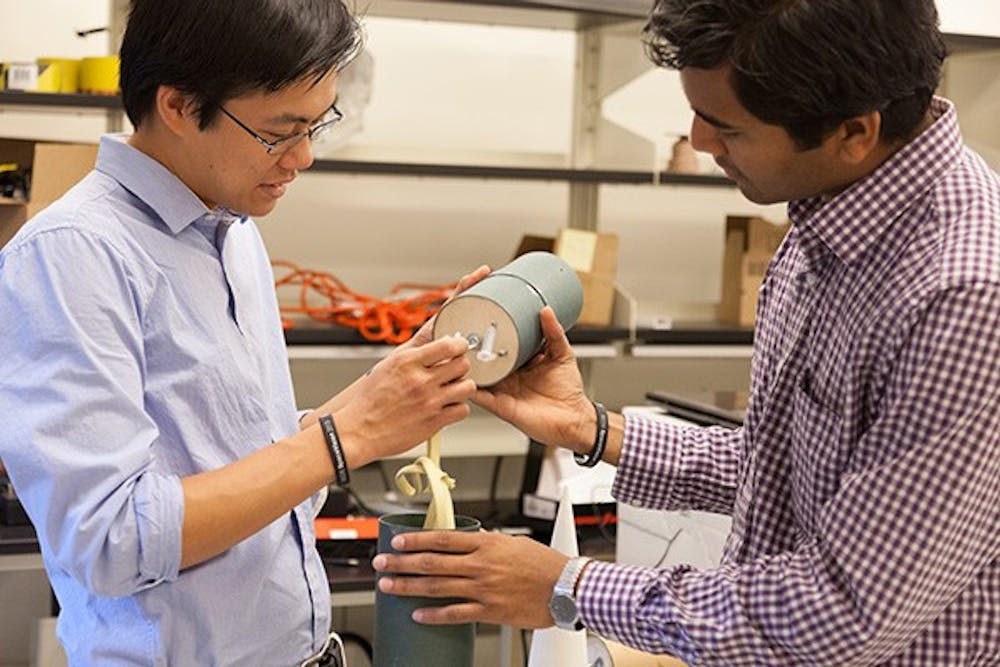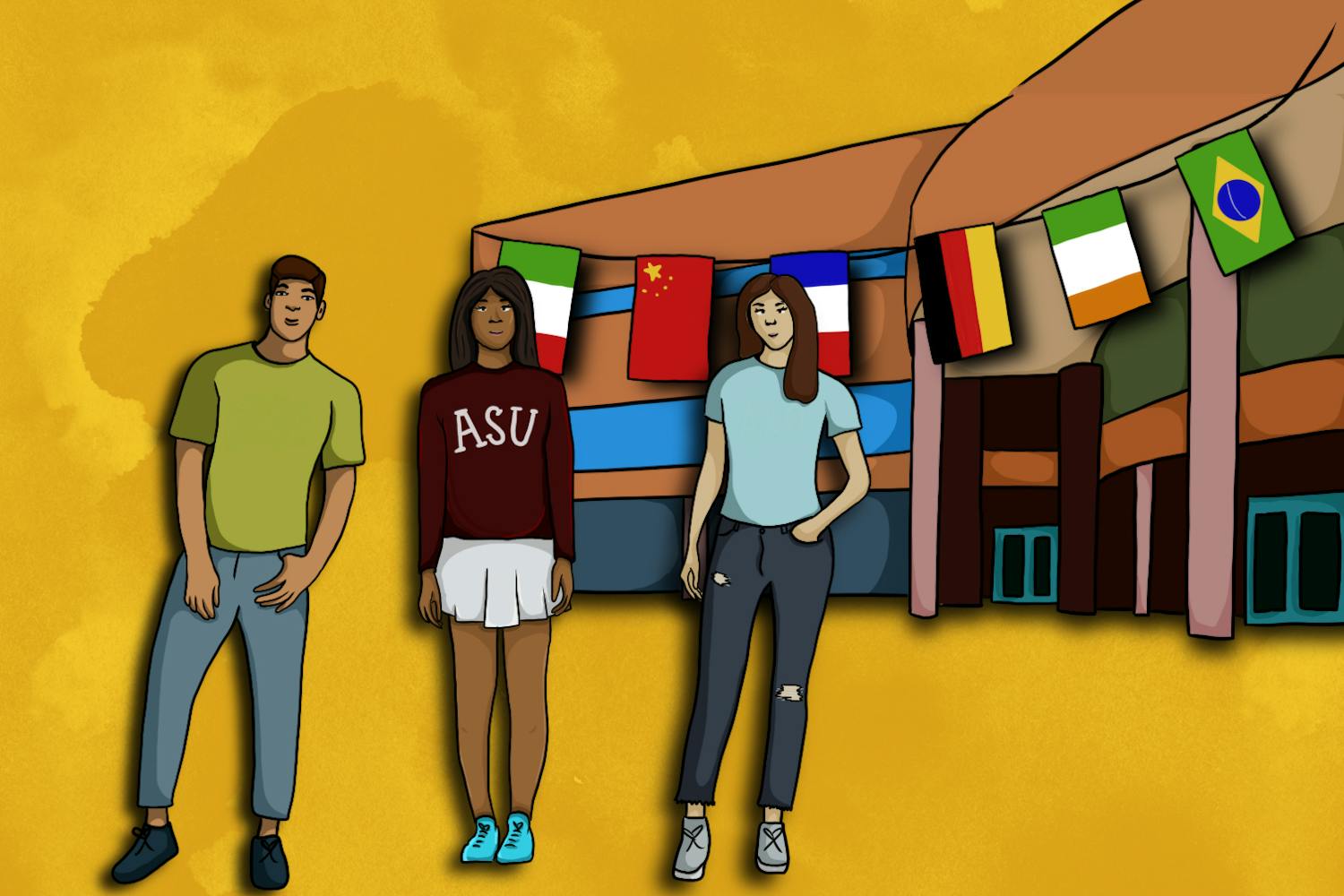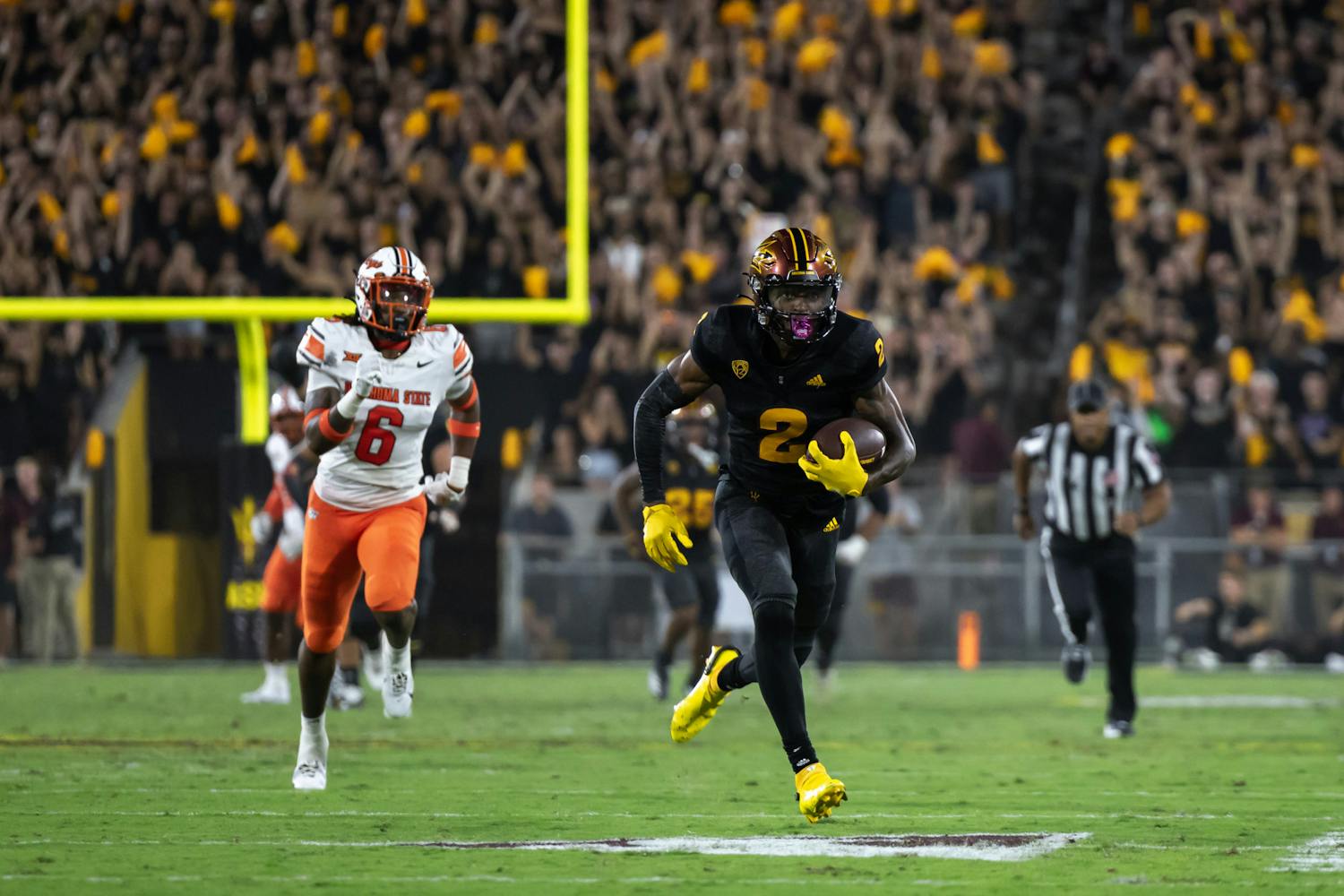Over the summer, Icarus Rocketry achieved its goal of launching a rocket 10,000 feet in the air. Now, the group aims for 25,000.
Although it formed in the summer of 2013, this young group already has a lofty goal in mind: to become the first student group in the world to launch a rocket 100,000 feet into the air. Student-made rockets in competitions typically aim for a height of about 20,000 feet, while the average airplane flies at a height of 30,000 feet.
The idea for the group formed during the Students for the Exploration and Development of Space’s 2013 High-Powered Rocketry Challenge.
Astrophysics graduate student student Peter Nguyen was part of that competition.
“We wanted to start a new rocketry team here that was focused on competing ... and actually building and flying rockets,” he said.
Exploration systems design senior David Nelson was part of the same team as Nguyen in the competition.
“We just kind of gradually made our own organization hoping to achieve higher goals,” Nelson said.
The group began to come together. Since then, it has grown to approximately 15-20 active members, including physics freshman Milan Patel.
“We’ve been going over workshops over different aspects of the rockets, such as the electronics and payload,” he said.
The rocket can't come together in an instant. It takes months of preparation and planning.
“Right now, we’re going over the actual physics of the rocket ... how to make it fly without just tipping over," Patel said.
 (Photo courtesy of Peter Nguyen)
(Photo courtesy of Peter Nguyen)Team members have already achieved a 10,000-foot launch, just a couple thousand feet shy of the average skydiving starting height. Now, the team is trying to reach 25,000 feet.
Nguyen said the team is going to split into separate groups to work on different aspects of the overall project.
Mechanical engineering graduate student Anandrao Biradar said that even though they are split into groups, the members are expected to have a vast understanding of each segment.
“You can do stuff fast and not wait for others,” he said. “You keep everything good, and if you know others, you can help them.”
Everyone has a concept of what the other groups are working on, which allows each member to help where necessary and not be held back by absences.
The separate groups cover all aspects of the project. Once everything in the lab has come together and been double checked, Icarus Rocketry has one more hurdle to clear.
The team has to file Federal Aviation Administration waivers for high-powered rockets.
Biradar said the group has gotten clearances from local rocketry groups before going to launch.
Once the paperwork is filed, the group can travel to a predetermined location for takeoff.
Astrophysics graduate student Kimberly Emig said that even once they arrive, more work needs to be done.
“Get those finishing touches,” she said, “That last-minute scrambling.”
Emig also said the rocket could land as far as three miles away from launch position.
“It kind of depends on weather conditions,” she said. “How windy it is, how high you’re going.”
Rockets have been lost in clouds or from wind, but the group has an even larger goal that will not allow the rocket to be taken by nature.
It wants to reach a height of 100 kilometers, or low-earth orbit.
“(We plan on ) being the first (student group) to hit the edge of space,” Nguyen said.
Sending a high-powered rocket into low-earth orbit is not where Icarus Rocketry would stop, though.
“Our sort of end goal is to develop a low-cost, reusable launch platform that not only the department can use,” Nguyen said. “Ultimately, if we get the costs low enough, then we can open the market up entirely to high school students (and) college students.”
The group can help other programs reach new heights and lofty goals, something that its namesake dreamed of doing.
“Icarus, in Greek mythology, was the one who wanted to fly high, who wanted to fly out of the atmosphere and reach the sun,” Nguyen said.
This child fell to his death after the feathers on makeshift wings melted.
“As an organization that is growing out of Phoenix, Icarus is sort of rising through the ashes, and he wants to fly to the outer space now,” Nguyen said.
Reach the reporter at lmnewma1@asu.edu, or follow him on Twitter @Logan_Newsman




